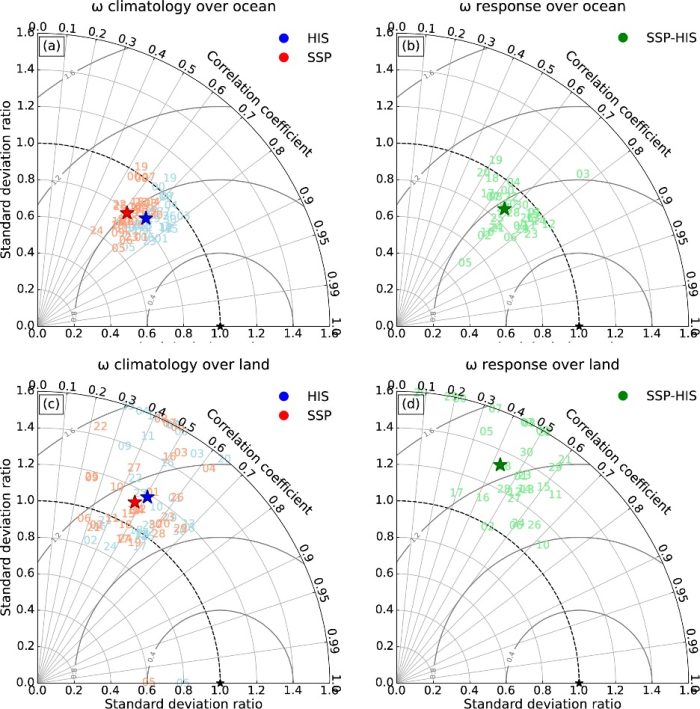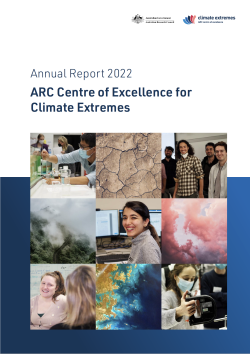The climate is the aggregate of individual weather systems. From this perspective, weather systems are the building blocks of the climate. Of course, the connection is not one way, since the frequency and amplitude of various weather systems are themselves modulated by climate.
The Weather and Climate Interactions research program investigates climate, and especially climate extremes, through a weather lens. In this pursuit, our work focuses on the physical mechanisms responsible for extreme weather in the tropics and extratropics and the effect of climate change on these mechanisms. Understanding how the weather changes as the world warms, and especially how extreme weather changes, is an important part of how climate change affects people, the economy and the environment.
The Weather and Climate Interactions research program was added to the Centre’s research portfolio two years ago. We have appointed our full complement of postdoctoral research associates, we have a strong cohort of graduate students, and we are making significant contributions to the science of weather and climate extremes.
PROJECT 1
Fronts are perhaps the only weather systems implicated in heat, wind and precipitation extremes. To illustrate this point, consider the following:
- The most catastrophic fires in recent history in southern Australia have been associated with extreme but shallow dry cold fronts that form along the southern coastline
- Melbourne’s record maximum temperature preceded the passage of the extreme cold front on Black Saturday
- Frontal systems commonly provide the uplift needed to produce extreme precipitation.
Our research into extratropical extremes is guided by the overarching question:
What controls the strength, frequency and path of fronts in the Australian extratropics, and how do these factors affect extremes?
PROJECT 2
Tropical lows are among the most important rain- bearing weather systems in the northern half of the continent. For example, in northern Australia, around half of all summertime rainfall is associated with them. Moreover, tropical lows are commonly implicated
in rainfall extremes — the east-coast flooding of 2021 being a recent catastrophic illustration. These considerations motivate our second overarching research question:
What causes the long-lived, heavy rains in tropical and subtropical Australia?

RESEARCH SNAPSHOT
Dr Andrew King, Dr Kim Reid and Dr Kate Saunders published a study about communicating the link between climate change and extreme rain events. Climate change is altering many aspects of the world around us and, when extreme events occur, climate change is often blamed in public discourse. This paper discusses why care must be taken in drawing a link between climate change and extreme rain events. In particular, long- duration extreme rainfall, often associated with river flooding, is usually related to persistent atmospheric moisture transport and stalled weather patterns. The climate change link with multi-day extreme rainfall is less clear than it is for sub-daily events where intensification is found almost everywhere. The paper gives guidance on how scientists discuss climate change and extreme rainfall in the aftermath of extreme events.
King, A.D., Reid, K.J. & Saunders, K.R. Communicating the link between climate change and extreme rain events. Nature Geoscience 16, 552–554 (2023). https://doi.org/10.1038/ s41561-023-01223-1
RESEARCH SNAPSHOT

In their recent research, PhD student Chen-Shuo Fan and Professor Dietmar Dommenget asked the question: why is the tropical circulation (winds) weakening? Using many climate models — such as the Coupled Model Intercomparison Project 6 (CMIP6) model — they found that the tropical circulation weakened by about 10 to 15 per cent over the 21st century. Moreover, they found the primary cause for this weakening was that the tropopause was rising. (The tropopause is the boundary between the lowest layer of the atmosphere, called the troposphere, and the next layer of the atmosphere, called the stratosphere.) The researchers argue that this deepening of the troposphere slows the circulation, which is important, as our weather is confined to the troposphere.
Fan, C-S. & Dommenget. D. The weakening of the tropical circulation is caused by the lifting of the tropopause height. Climate Dynamics (2023) https://doi.org/10.1007/s00382-023- 06909-1
ARC Centre of Excellence for Climate Extremes – Annual Report 2023
From the Chair of the Advisory Board
Climate Science Leaders of the Future
Weather and Climate Interactions Research Program
Attribution and Risk Research Program
Ocean Extremes Research Program
Computational Modelling Systems
Governance, Management and our Commitment to Equity, Diversity and Inclusion

